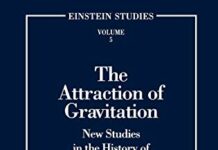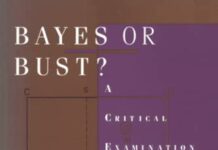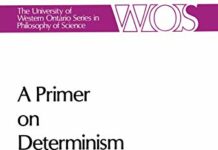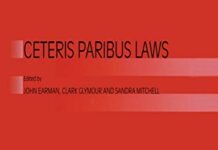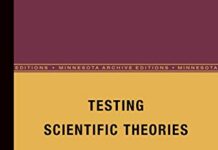
Ebook Info
- Published: 1992
- Number of pages: 250 pages
- Format: PDF
- File Size: 20.21 MB
- Authors: John Earman
Description
Newton’s Principia introduced conceptions of space and time that launched one of the most famous and sustained debates in the history of physics, a controversy that involves fundamental concerns in the foundations of physics, metaphysics, and scientific epistemology. This book introduces and clarifies the historical and philosophical development of the clash between Newton’s absolute conception of space and Leibniz’s relational one. It separates the issues and provides new perspectives on absolute relational accounts of motion and relational-substantival accounts of the ontology of space time. Earman’s sustained treatment and imaginative insights raise to a new level the debate on these important issues at the boundary of philosophy and physics. He surveys the history of the controversy from Newton to Einstein develops the mathematics and physics needed to pose the issues in sharp form and provides a persuasive assessment of the philosophical problems involved. Most importantly, Earman revitalizes the connection of the debate to contemporary science. He shows, for example, how concerns raised by Leibniz form the core of ongoing debate on the foundations of general theory of relativity, moving the discussion into a new and vital arena and introducing arguments that will be discussed for years to come.A Bradford Book
User’s Reviews
Editorial Reviews: Review – Lawrence Sklar, University of Michigan” Earman has produced a comprehensive and very exciting study of many of the most important metaphysical issues in the theory of space and time. ” – Lawrence Sklar, University of Michigan” This is a book about two related questions: Is motion absolute or relative? Is space a substance? . . If you are fond of a good discussion and have interest in the fundamental concepts of space, time, and motion, then this is a book for you.” – “Classical and Quantum Gravity”& quot; Earman has produced a comprehensive and very exciting study of many of the most important metaphysical issues in the theory of space and time. & quot; – Lawrence Sklar, University of Michigan& quot; This is a book about two related questions: Is motion absolute or relative? Is space a substance? . . If you are fond of a good discussion and have interest in the fundamental concepts of space, time, and motion, then this is a book for you.& quot; – Classical and Quantum Gravity”This is a book about two related questions: Is motion absolute or relative? Is space a substance? . . If you are fond of a good discussion and have interest in the fundamental concepts of space, time, and motion, then this is a book for you.”- “Classical and Quantum Gravity””Earman has produced a comprehensive and very exciting study of many of the most important metaphysical issues in the theory of space and time. “- Lawrence Sklar, University of Michigan Review This is a book about two related questions: Is motion absolute or relative? Is space a substance?.. If you are fond of a good discussion and have interest in the fundamental concepts of space, time, and motion, then this is a book for you.―Classical and Quantum Gravity About the Author John Earman is Professor of History and Philosophy of Science at the University of Pittsburgh. Read more
Reviews from Amazon users which were colected at the time this book was published on the website:
⭐This classic work in the philosophy of physics examines the nature of space-time by illuminating the historical developments and the current status of the absolute versus relational debate. The absolute view holds in simple terms that the space-time is something that has an independent existence of its own playing a role of a “container” for physical objects like particles and fields. The relationists claim on the other hand that only physical objects and relations between them truly exist whereas space-time is a notion derived from the underlying relations, a book-keeping device.Major historical proponents of both views were respectively Newton and Leibniz.Earman manages to clarify the central points of the debate employing not only transparent wording and analysis but also carefully dosed differential geometry.Starting with Newton’s Principia the book traces the Leibniz Clarke (Newton’s proxy) correspondence, rewrites then historical space-time ideas in mathematical terms and discusses philosophical arguments for each model. One chapter of the book deals exclusively with rotation which was one of the main Newton’s for absolute space. Next chapters deal with modern relational theories, Kant’s contributions to the debate and impact of relativity and field theory. From a physicist viewpoint especially the last chapter on the contribution of the General Theory of Relativity to the question whether space time is a substance is an illuminating read. I really enjoyed this book and recommend it to everybody interested in these topics. My second reading this time was triggered by thoughts on the ontology of quantum field theory in particularly on the question of particle vs. fields and the role of the metric field in the GRT.
⭐
Keywords
Free Download World Enough and Space-Time: Absolute versus Relational Theories of Space and Time (Bradford Books) in PDF format
World Enough and Space-Time: Absolute versus Relational Theories of Space and Time (Bradford Books) PDF Free Download
Download World Enough and Space-Time: Absolute versus Relational Theories of Space and Time (Bradford Books) 1992 PDF Free
World Enough and Space-Time: Absolute versus Relational Theories of Space and Time (Bradford Books) 1992 PDF Free Download
Download World Enough and Space-Time: Absolute versus Relational Theories of Space and Time (Bradford Books) PDF
Free Download Ebook World Enough and Space-Time: Absolute versus Relational Theories of Space and Time (Bradford Books)
